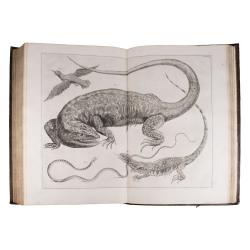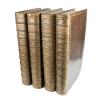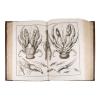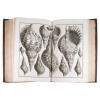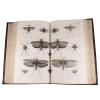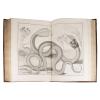Locupletissimi rerum naturalium thesauri accurata descriptio, et iconibus artificiosissimis expressio, per universam physices historiam.
Eur 115,000 / USD 126,500
The price shown on each item does not include V.A.T (Value Added Tax). As a result of the recent EU legislation we are required to charge our EU customers the percentage of V.A.T. charged by the customer’s country of residence, unless they possess a V.A.T. registration number. Postage Additional.
Amsterdam, J. Wetsten, Gul. Smith, and Jansson-Waesberg (volumes 1 and 2); Jansson-Waesberg (volume3); H. C. Arkesteum and H. Merkum, Peter Schouten (volume 4), 1734-1765'. Folio (510 x 335mm). pp. (xxxiv), 178; (xxxiv), 154; (xxvi) 212 (recte 216); (iv), 42, 214, with engraved frontispiece, vignette on titles, portrait of Seba, 5 head-pieces, and 449 engraved plates, of which 174 are double-page, text in Latin and Dutch. Contemporary Dutch calf.
A SPLENDID COPY OF THE FIRST EDITION OF ONE OF THE GREATEST NATURAL HISTORY BOOKS OF ALL TIME.
A SPLENDID COPY OF THE FIRST EDITION OF ONE OF THE GREATEST NATURAL HISTORY BOOKS OF ALL TIME.
The most finely illustrated and lavish record of an eighteenth-century natural history cabinet. The stunning plates depict exotic plants, animals, insects, minerals, fossils, and shells, along with some monstrosities. The shell plates are particularly impressive, with 60 plates depicting several thousand shells arranged in decorative patterns.
Albertus Seba (1665-1736), the son of a Frisian peasant, became an apothecary in Amsterdam and amassed a considerable fortune in the service of the Dutch East India Company. His wealth and contacts enabled him to accumulate an internationally renowned collection of natural wonders, and his private museum was one of the 'sights' of Amsterdam and was visited by both nobility and naturalists. In 1717 he sold his collection to Peter the Great for the then enormous sum of 15000 guilders, but embarked immediately upon forming a second collection, even grander than the first. It is this second collection which is commemorated in the present work, published over thirty years with no expense spared in its production. Seba himself died in 1736, after the first two volumes had appeared. His collection was auctioned in 1752 in order to provide funds to complete the publication. The drawings of plants are now in the Sate Herbarium at Leiden. A collection of fossils and minerals, known as the Seba collection, is in the Palaeontological Museum in Copenhagen. It was purchased at the 1752 auction by Count Moltke.
Seba was assisted in the preparation of the text by such eminent naturalists as Boerhave, Artedi, Gaubius, Musschenbroek, et al. Aernout Vosmaer (1720-1799) was the editor of the last two volumes, assited by Pallas and Houttuyn. Vosmaer was Director of the menageries of the 'Natuur- en Kunstcabinetten' of the Stadtholder Willliam V.
The frontispiece, an allegory of the personified continents offering up their natural treasures, is engraved by Pieter Tanjé after L.F. Dubourg, the portrait of Seba is engraved by J. Houbraken after J.M. Quinkard, and the five head-pieces are also by Tanjé. The plates are by Tanjé and other artists and engravers, for whom see Nissen.
Nissen BBI, 1825; Nissen ZBI, 3793; Landwehr 178, 179; Fine Bird Books p. 106.

